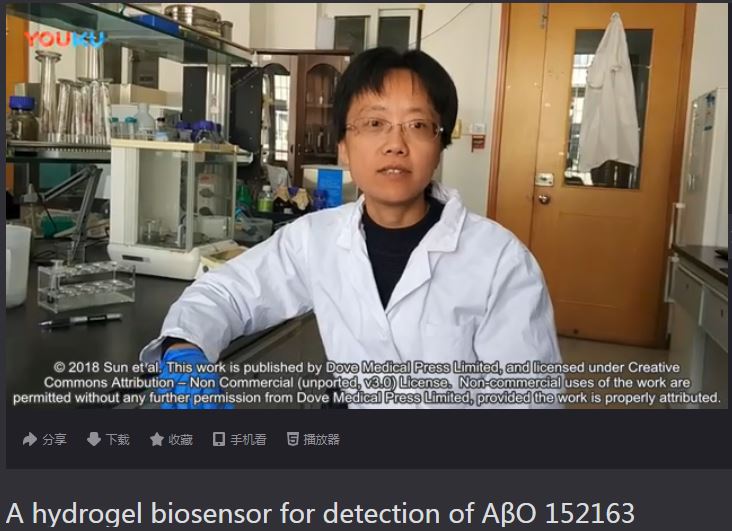9 0 5 7 8
论文已发表
注册即可获取德孚的最新动态
IF 收录期刊
- 2.6 Breast Cancer (Dove Med Press)
- 3.9 Clin Epidemiol
- 3.3 Cancer Manag Res
- 3.9 Infect Drug Resist
- 3.6 Clin Interv Aging
- 4.8 Drug Des Dev Ther
- 2.8 Int J Chronic Obstr
- 8.0 Int J Nanomed
- 2.3 Int J Women's Health
- 3.2 Neuropsych Dis Treat
- 4.0 OncoTargets Ther
- 2.2 Patient Prefer Adher
- 2.8 Ther Clin Risk Manag
- 2.7 J Pain Res
- 3.3 Diabet Metab Synd Ob
- 4.3 Psychol Res Behav Ma
- 3.4 Nat Sci Sleep
- 1.9 Pharmgenomics Pers Med
- 3.5 Risk Manag Healthc Policy
- 4.5 J Inflamm Res
- 2.3 Int J Gen Med
- 4.1 J Hepatocell Carcinoma
- 3.2 J Asthma Allergy
- 2.3 Clin Cosmet Investig Dermatol
- 3.3 J Multidiscip Healthc

A hydrogel biosensor for high selective and sensitive detection of amyloid-beta oligomers
Authors Sun LP, Zhong Y, Gui J, Wang XW, Zhuang XR, Weng J
Received 20 September 2017
Accepted for publication 10 December 2017
Published 8 February 2018 Volume 2018:13 Pages 843—856
DOI https://doi.org/10.2147/IJN.S152163
Checked for plagiarism Yes
Review by Single-blind
Peer reviewers approved by Dr Govarthanan Muthusamy
Peer reviewer comments 3
Editor who approved publication: Dr Lei Yang
Background: Alzheimer’s disease (AD) is a neurodegenerative disorder
characterized by progressive cognitive and memory impairment. It is the most
common neurological disease that causes dementia. Soluble amyloid-beta
oligomers (AβO) in blood or cerebrospinal fluid (CSF) are the pathogenic
biomarker correlated with AD.
Methods: A simple electrochemical biosensor using
graphene oxide/gold nanoparticles (GNPs) hydrogel electrode was developed in
this study. Thiolated cellular prion protein (PrPC) peptide probe
was immobilized on GNPs of the hydrogel electrode to construct an AβO
biosensor. Electrochemical impedance spectroscopy was utilized for AβO analysis.
Results: The specific binding between AβO and PrPC probes on the hydrogel electrode resulted in
an increase in the electron-transfer resistance. The biosensor showed high
specificity and sensitivity for AβO detection. It could selectively differentiate
AβO from amyloid-beta (Aβ) monomers or fibrils. Meanwhile, it was highly
sensitive to detect as low as 0.1 pM AβO in artificial CSF or blood
plasma. The linear range for AβO detection is from 0.1 pM to 10 nM.
Conclusion: This biosensor could be used as a cost-effective
tool for early diagnosis of AD due to its high electrochemical performance and
bionic structure.
Keywords: Alzheimer’s
disease, amyloid-beta oligomer, graphene, gold nanoparticles, biosensor
摘要视频链接:Ahydrogel biosensor for
detection of AβO
